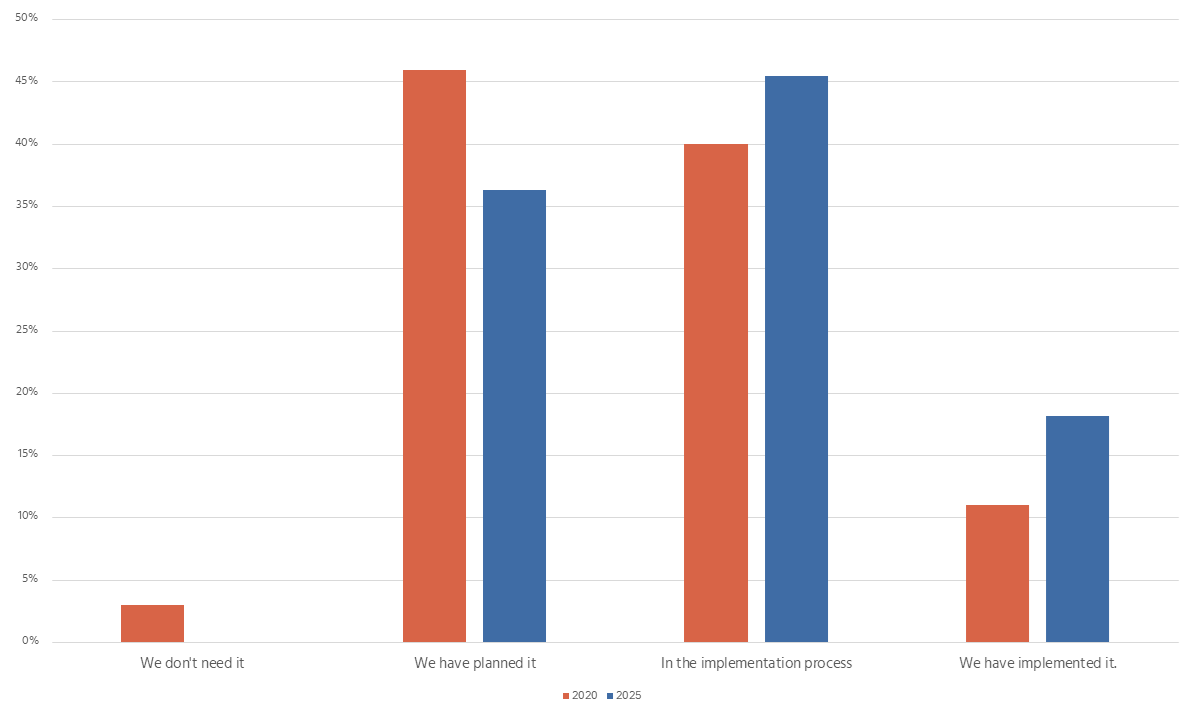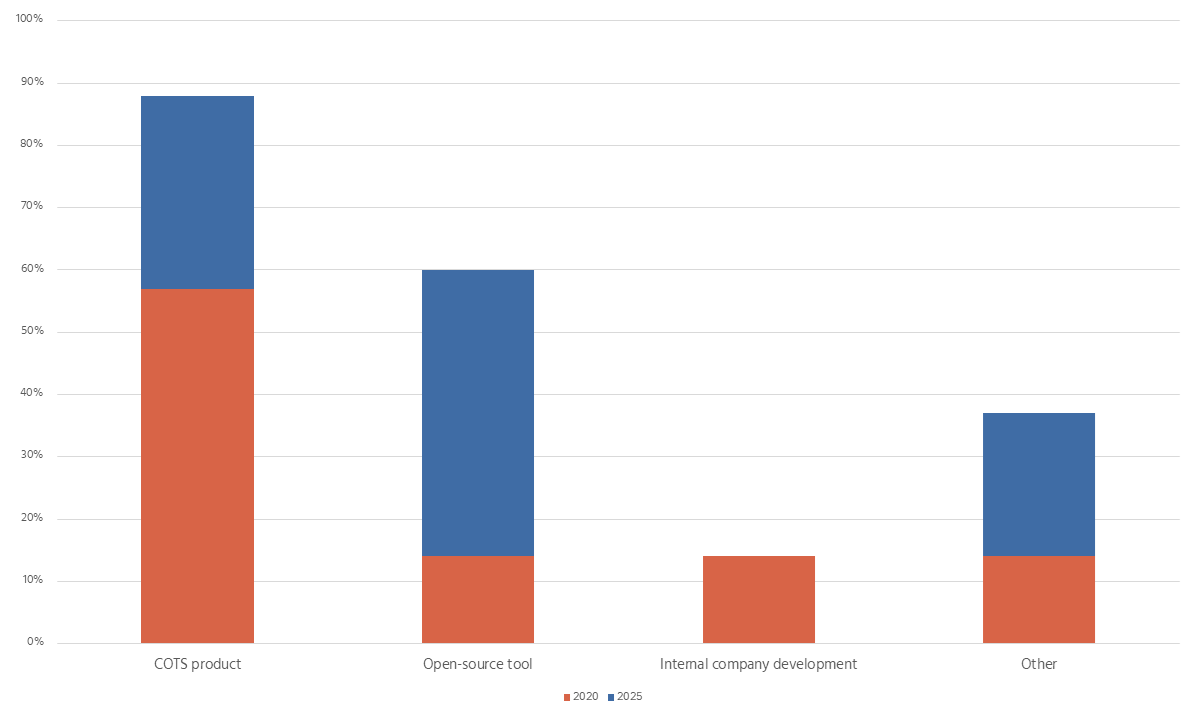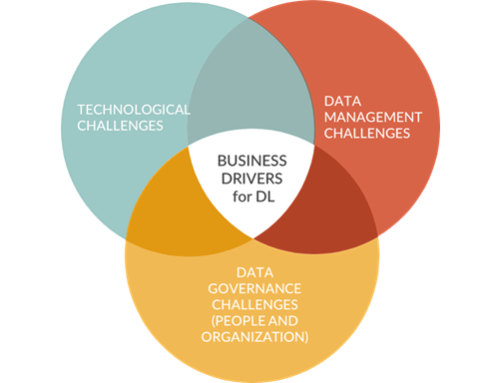Part 1 of the article discusses technological trends and challenges in data lineage documentation.
Understanding the Relationship Between Drivers, Challenges, and Trends
Before we dive in, let’s clarify the logic behind this article.
In my earlier research, I defined three key concepts:
- A data management trend is the direction in which practices evolve over time.
- A driver is a force in the external business environment that influences these trends.
- A challenge is a difficult task or obstacle that tests our ability to make progress.
Challenges and trends are interconnected. Often, a challenge gives rise to a trend—as organizations experiment with new ways to solve problems. In other cases, a trend creates new challenges—as we saw when digitalization led to issues in cybersecurity and privacy.
This interplay is especially relevant to data lineage. Let’s begin by looking at the external drivers that make lineage essential for modern organizations.
Business Drivers Behind Lineage Adoption
Regulatory Compliance and Risk Transparency
The most powerful driver is regulation. Supervisory bodies now expect organizations—especially in the financial sector—to provide full transparency into their risk data. The BCBS 239 principles, expanded through the ECB 2024 supervisory guide, outline detailed expectations for what data lineage must include.
According to these guidelines, organizations must:
- Document end-to-end data lineage across risk aggregation and reporting chains at the attribute level.
- Maintain a complete, current, and accurate lineage, even when systems or ownership change.
- Demonstrate traceability at multiple levels—from technical flows to business terms to governance structures.
- Embed lineage into their risk data governance frameworks, including defined ownership and escalation paths.
- Link lineage to data quality validation, enabling rapid investigation of reporting errors or inconsistencies.
- Manage lineage within a metadata environment, allowing for version control, monitoring, and integration with glossaries and controls.
In short, regulators don’t just want to know where your data came from—they want evidence that you understand and control how data flows and who is responsible at every step.
Data-Driven Decision-Making and AI Enablement
As organizations increase their reliance on analytics and AI, the data that feeds those systems must be explainable, traceable, and trustworthy. Lineage plays a vital role in ensuring that input data is both technically accurate and contextually understood. This matters not just for operational confidence, but also for regulatory expectations around AI transparency and model accountability.
Operational Efficiency and Impact Analysis
Data lineage also serves a critical role in incident response and root cause analysis. When something breaks—a late file, a broken dashboard, or a quality issue—lineage enables teams to quickly trace the issue back to its origin. That improves uptime, shortens resolution cycles, and strengthens overall data reliability.

Figure 1: Data Lineage Documentation Progress.
Figure 1 illustrates the evolution of data lineage documentation over the past five years based on the results of LinkedIn Polls. The number of organizations that have implemented lineage has doubled, and an even greater number now recognize its strategic value. This points to a maturing market—but also a widening gap between lineage awareness and lineage execution.
Tackling Technological Challenges
Despite its growing importance, lineage isn’t easy to implement. Many of the most challenging problems are technological.
Challenge 1: Untangling Complex Data Ecosystems
Data flows through a fragmented landscape, comprising on—premises systems, cloud platforms, SaaS tools, APIs, batch, and real-time streams. Capturing and aligning lineage across this ecosystem is inherently difficult. Each environment may use different metadata formats or lack accessible documentation altogether.
Challenge 2: Bridging Tool Limitations and Automation Gaps
Even the most sophisticated tools struggle to capture 100% of the picture. They may not parse custom transformations, legacy systems, or proprietary scripts. Many organizations rely heavily on automation, only to find it fails to detect edge cases or undocumented flows.
Challenge 3: Linking Lineage Across Multiple Levels
Users today want to see more than technical connections—they want to understand how data relates to business concepts, such as KPIs, terms, and controls. But building a lineage that bridges technical metadata and business meaning is often a major architectural and modeling challenge.
Challenge 4: Scaling Without Losing Clarity
As more systems and pipelines are added, lineage diagrams can grow unwieldy. Performance suffers, visualizations become cluttered, and users start to disengage. Organizations need lineage to scale without becoming overwhelming.
Challenge 5: Aligning with Regulatory Requirements
Lineage is increasingly needed for audits and compliance reporting—but most implementations are still treated as side projects. Without continuous updates, version control, or ownership tracking, lineage quickly becomes stale and non-compliant.
Trends That Address These Challenges
Each of these five challenges has prompted a set of practical responses. Let’s walk through the major trends that are actively helping organizations overcome their technology-related lineage issues.
Trend 1: Cross-Platform and Cloud-Native Lineage Solutions
To manage complexity, organizations are shifting toward open, connector-based, and cloud-ready lineage platforms. These tools support integration across cloud warehouses, ETL pipelines, orchestration tools, APIs, and even SaaS applications. Rather than enforce centralization, they allow metadata to be federated and aligned—making it possible to see lineage across diverse platforms without redesigning the data architecture.
Trend 2: Hybrid Lineage Capture Models
To close automation gaps, many teams now implement hybrid capture strategies. These include:
- Automated scanning of SQL, Spark, and ETL tools
- Runtime observability from orchestration logs
- Manual annotations added by developers and data stewards
- Reverse engineering for legacy platforms
This layered approach ensures that lineage coverage improves without depending solely on automation. It also helps add context—why a transformation happens—not just what it does.
Trend 3: Semantic Layering and Business-Technical Alignment
Organizations increasingly invest in semantic layering models that map business terms to technical assets. Business glossaries are tied to data catalogs, which are in turn integrated with lineage tools. This structure allows users to trace a business metric back to its source data, understand its transformations, and verify its alignment with governance policies.
Some systems now support “click-through lineage”—where users can start with a dashboard and drill down into tables, pipelines, and even raw code. This multi-level navigation bridges the gap between business understanding and technical execution.
Trend 4: Tiered Lineage Views and Usable Visualizations
To avoid overwhelming users, modern platforms now offer role-specific views of lineage. For example:
- Business users see simplified overviews with business terms and report lineage.
- Data engineers access detailed column-level flows and job dependencies.
- Data stewards interact with lineage that highlights ownership, quality rules, and usage.
Visualization tools also support search, filtering, summarization, and navigation controls. By tailoring the experience to the user’s role and context, lineage becomes easier to understand and more useful in practice.
Trend 5: Lineage as a Formal Compliance Capability
The strongest trend responding to regulatory pressure is the integration of lineage into formal governance and compliance infrastructure. This means:
- Version-controlled lineage snapshots that support audit reviews
- Tagged data flows highlighting personal data, risk data, and regulatory exposure
- Lineage-linked ownership models, so every transformation has an accountable steward
- Automated impact assessments, triggered when upstream changes affect compliance reports
In this model, lineage is treated as a compliance control, on par with audit trails or data access logs. Rather than being an IT side project, lineage becomes a key part of the regulatory toolkit.

Figure 2: Trends in Using Data Lineage Tools.
Figure 2 shows the growing adoption of open-source and ecosystem-integrated lineage tools based on the results of LinkedIn Polls. Custom-built solutions are declining as more teams adopt modular platforms that connect directly to orchestration tools, catalogs, and data quality platforms. This shift is helping organizations align lineage efforts with broader metadata and governance initiatives.
What Comes Next?
In this first part, we explored the external forces driving lineage adoption, the technological challenges organizations face, and the trends that are actively helping them respond.
But that’s only one part of the story.
In Part 2, we’ll delve into data management and governance, as well as human challenges—issues related to standards, collaboration, and sustainability—and explore the trends that make data lineage not only possible but also sustainable.
We’ll also offer a practical action plan to help you move forward—whether you’re just starting or scaling an existing effort.


